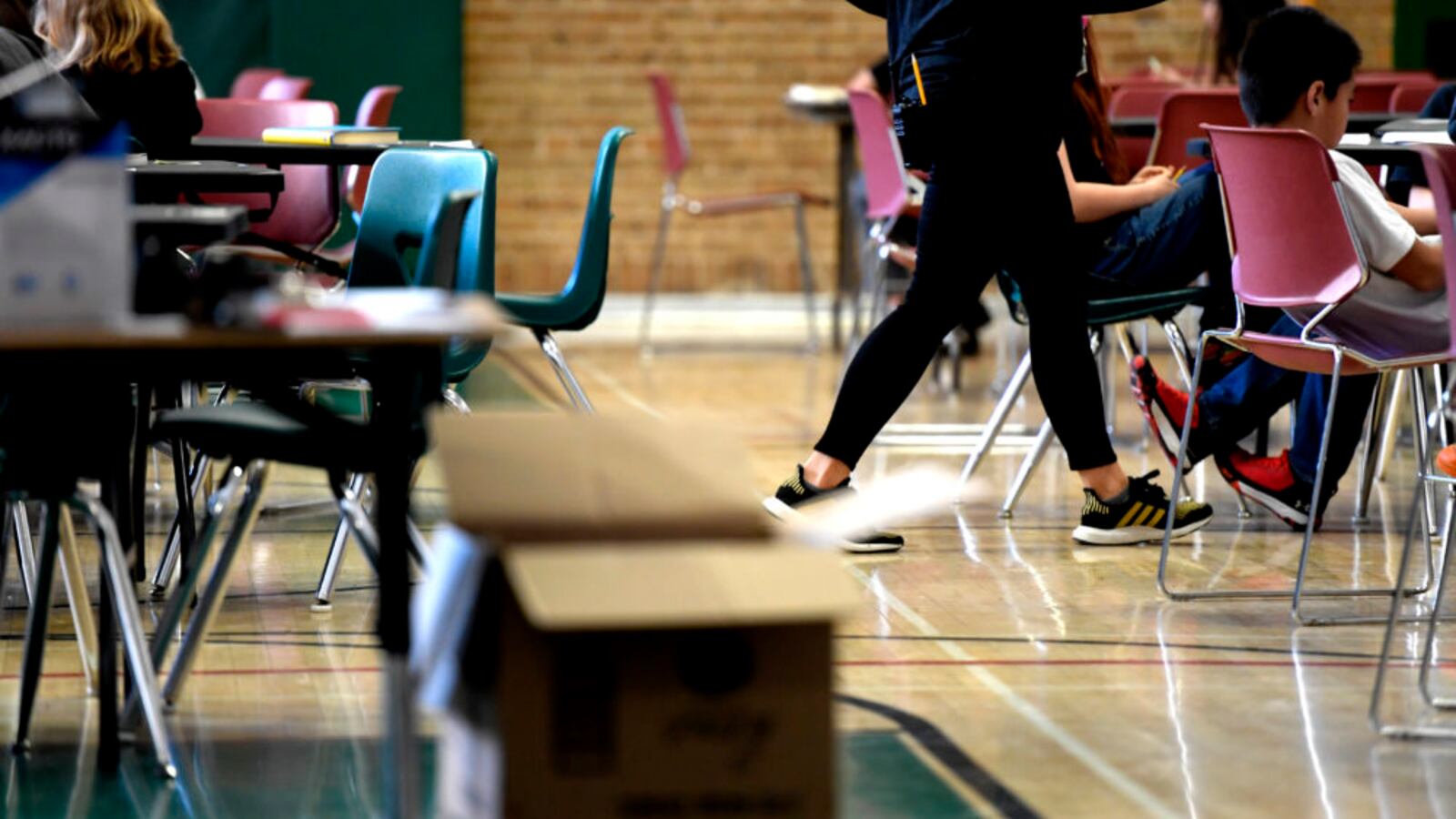At Skinner Middle School in northwest Denver, the “classroom” for the entire seventh-grade is a first-floor auditorium with wooden seats. It’s typically used for school assemblies and Shakespeare, but today it’s dedicated to math and language arts.
Downstairs in the gym, students squint over pre-packaged literacy curriculum directing them to read a paragraph about Susan B. Anthony and answer questions citing evidence.
The school’s executive principal, holding a flute in one hand, stands at the front of another classroom teaching a combined beginning band and concert band class fingering and rhythms.
This was what school looked like Monday morning in a large comprehensive middle school that saw 38 of its 39 teachers join with colleagues across the city going on strike in a dispute with Denver Public Schools about how much teachers are paid and the factors that determine their paychecks.
Students across Denver reported mixed experiences in schools as the strike began. Some high school students walked out to join their teachers on picket lines, while some students reported crowded classrooms, marathon attendance-taking sessions, and other disruptions.
After initially refusing media requests to be inside schools, citing the potential disruption, district officials agreed Monday morning to grant limited access to one school for a print/digital reporter, photographer, and TV crew, on the condition that students and staff not be identified. (Chalkbeat as the print/digital representative agreed to share its notes with other media.)
For school leaders like Grant Varvaris, the Skinner Middle School principal, the strike poses logistical and teaching challenges. The school invited students to spend part of the morning writing letters and drawing pictures to be delivered to their teachers outside on the picket lines, sharing messages like “we love you and we miss you, and we also understand why you are doing it.”
Activity coordinators broke up the monotony of hours sitting with “brain breaks,” leading students doing physical activities, like playing frisbee or tag outside.
The “giant classrooms,” as Varvaris describes the auditorium and gym, are working so far, he said. About 75 percent of the school’s roughly 625 students attended class Monday, and it would typically be about 95 percent. About 75 adults were in the building, down from the usual 100. Administrators, non-teachers union staff like cafeteria workers, seven district central office staff, and nine substitutes were on hand.
The gymnasium during third period had an adult-to-student ratio of about 1:10.
“I feel like it’s different than normal,” Varvaris said. “I know the kids are safe. I do know that our learning is impacted a little bit. I’m not going to pretend everything is as good as our 38 teachers who deliver great lessons. I feel a little bit just nervous because it’s just different, but I think our adults and kids are working really hard to make it work.”
That all but one Skinner teacher joined the strike stands out considering the school district said about 56 percent of Denver teachers did not show up Monday. Union officials released their own numbers showing that more than 71 percent of all employees covered by the union contract — teachers, nurses, counselors, and therapists — signed in or were counted on picket lines.
Some parents joined picketing parents with signs of their own outside Skinner, including Mary Harmon, who has two children at Skinner and one at North High School.
Harmon cited a litany of concerns that has her siding with the teachers union: that the district is top-heavy with administrators, and that after 15 months the district couldn’t make an offer acceptable to teachers.
Late Monday morning, she was sitting in a chair outside the main office waiting for Varvaris.
She wanted to know whether students were working on lessons prepared by their classroom teachers instead of what she called the “busywork” of district-prepared curriculum.
Varvaris replied that it was the curriculum district staff prepared for the strike, and told her that no, her son did not have to work on it.
Before the meeting with the parent, Varvaris said he wants to support his teachers and support anyone who walks through the door, without taking sides during a challenging moment.
“What we have said is we are a family when it starts,” he said, “and we’ll be a family when it’s over.”

